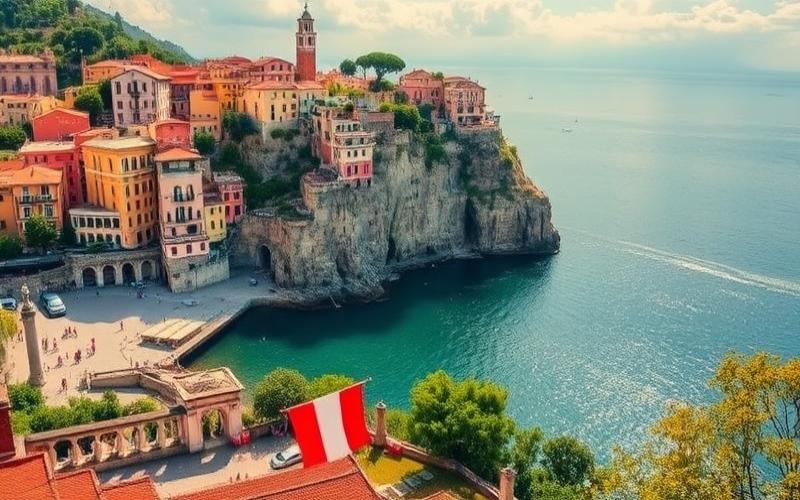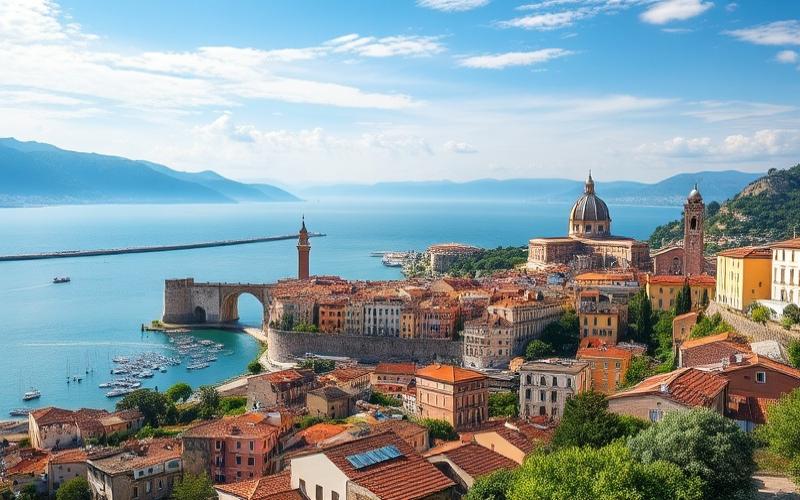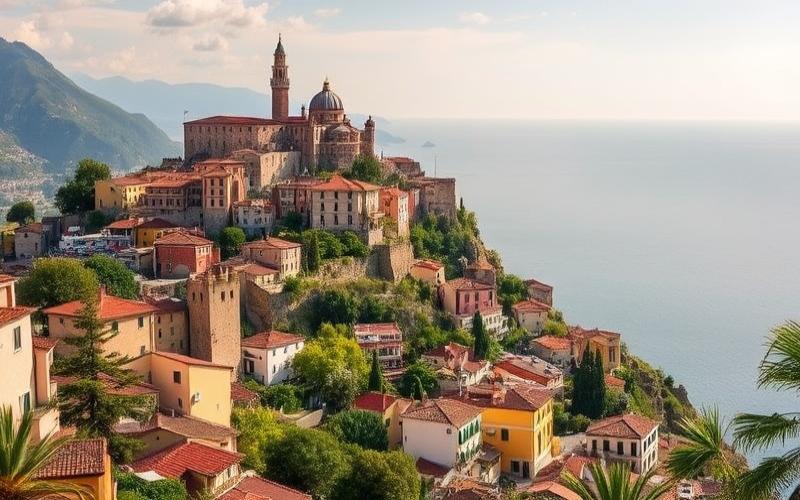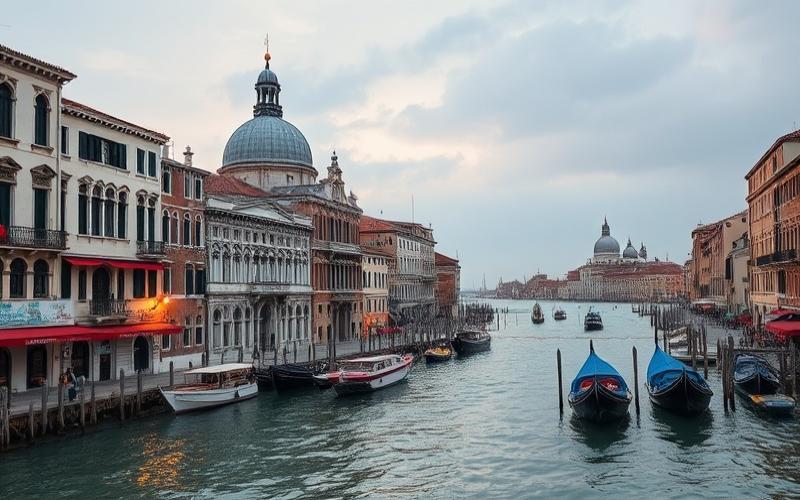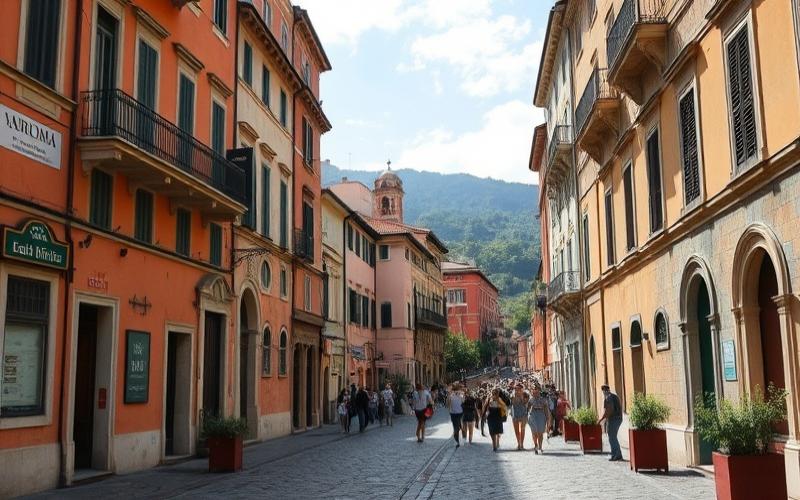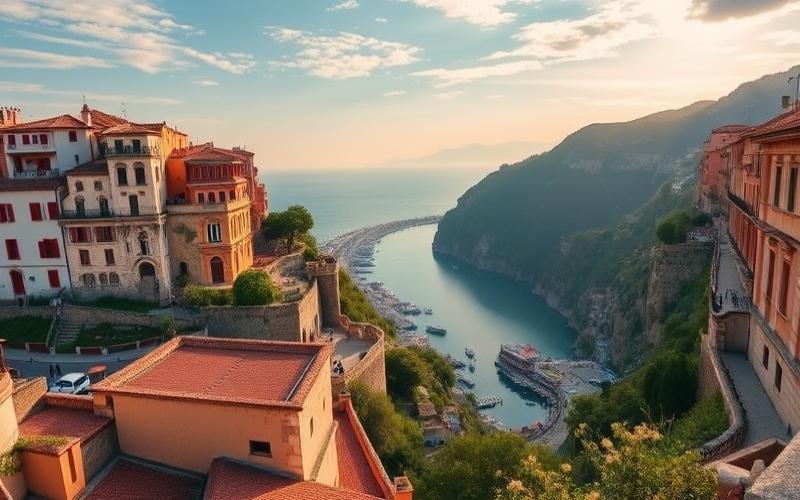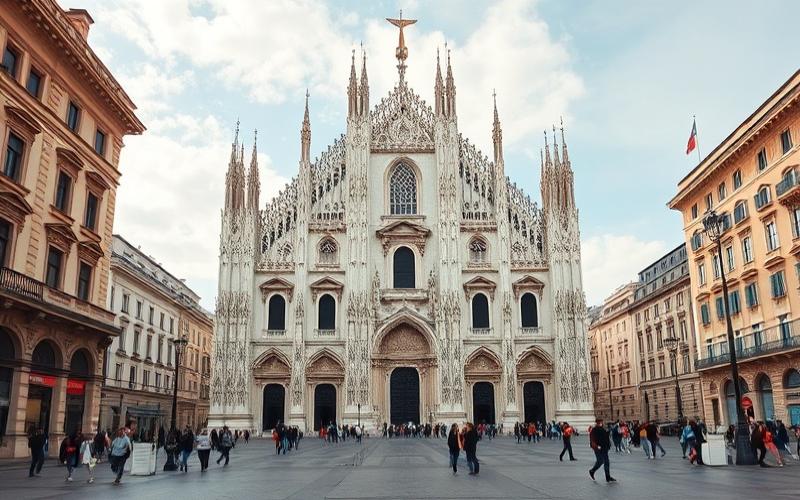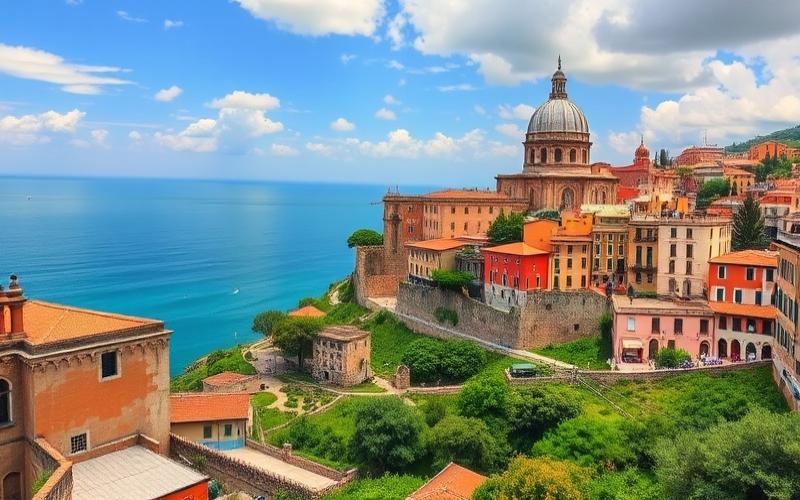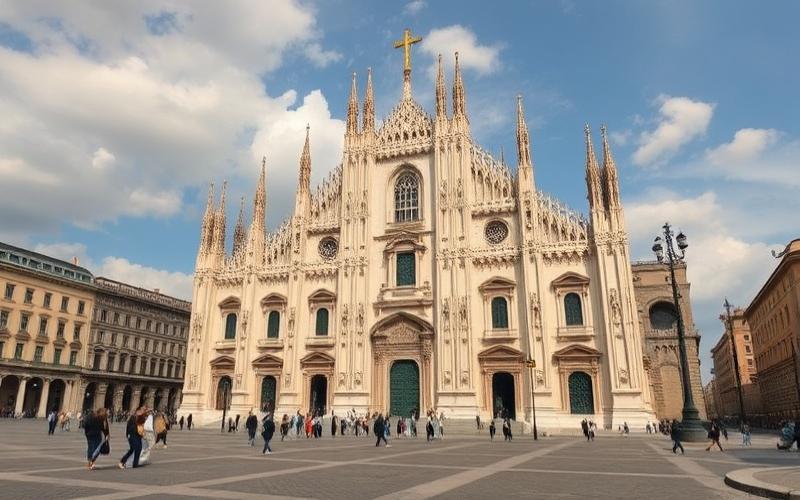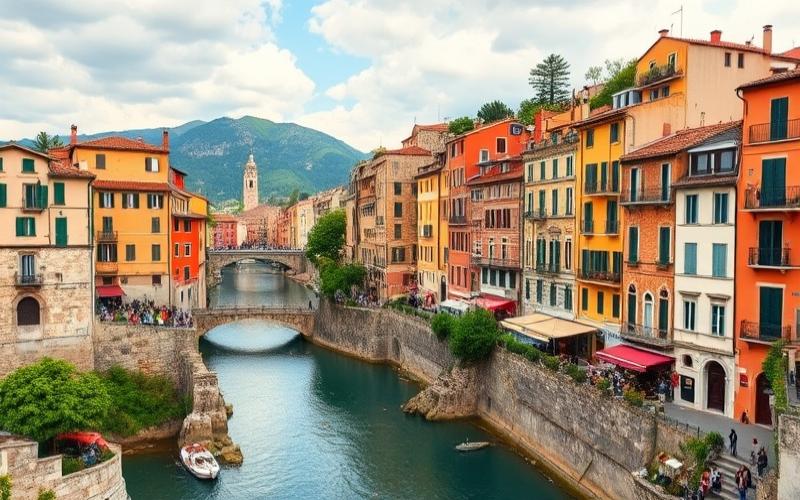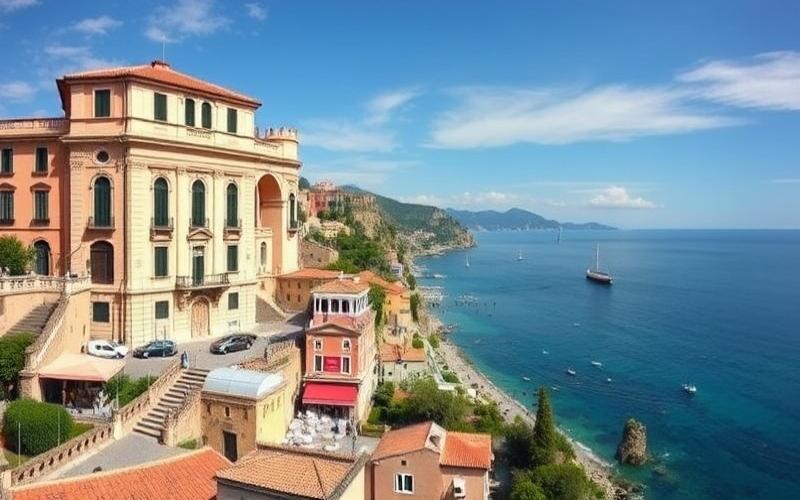
 Published on and written by Cyril Jarnias
Published on and written by Cyril Jarnias
Italy’s real estate industry, a sector undergoing significant transformation, offers new perspectives through strategic free zones emerging across the country.
These zones represent not only investment opportunities but also hubs of innovation that could redefine Italy’s industrial landscape.
Whether you’re an experienced investor or new to the market, understanding the importance of these free zones is crucial for seizing the most promising opportunities.
Attracting companies from around the world, these regions often feature tax benefits and modern infrastructure, making their exploration essential for anyone looking to establish operations in Italy.
Introduction to Free Zones in Italy
Free zones are designated areas benefiting from specific customs and/or tax regimes, designed to facilitate trade and attract investments by reducing administrative burdens and market entry costs. They are characterized by the suspension or exemption of certain duties and taxes, simplified procedures, and targeted competitiveness mechanisms for economic operators.
Role in the Italian Economy
- Accelerate trade flows through suspension of import duties and taxes until entry into the national market, improving liquidity for industrial and logistics companies.
- Strengthen port and border hubs (e.g., special statuses like Livigno) to support cross-border trade and attract international clients.
- Support employment and productive investment through preferential regimes targeting product establishment and transformation within the zones.
Key Benefits for Businesses
Tax and Customs Benefits
- Exemption or suspension of import duties and taxes as long as goods remain within the zone.
- Taxation upon entry only when released into the national market, allowing deferred tax burden and optimized cash flow.
- Sectoral reductions/exemptions potentially including relief on investments and real estate capital gains, accelerated depreciation, and deductions related to employment and training, depending on the applicable framework.
Logistics and Operational Benefits
- Transformation/assembly without taxation within the zone, promoting local value-added and repackaging.
- Streamlined procedures for authorized economic operators (AEO) and simplification of certain regulations.
- Managed traceability and control through material accounting and customs surveillance, securing the supply chain.
Focus on Industrial Real Estate Sector
Opportunities
- Development of warehouses, logistics platforms, and processing plants within the zones, benefiting from duty suspension and proximity to port/airport nodes.
- Asset appreciation through rental appeal to exporting companies and 3PLs seeking customs benefits and reduced lead times.
Economic Levers
- Optimization of operating costs (lower tax immobilization of inventory, increased turnover).
- Potential for accelerated depreciation and relief on certain real estate investments, when provided by the local framework.
History in Italy
Italy follows the European trajectory of special regime zones, with historical examples of derogatory statuses like Livigno, exempt from certain state taxes (including VAT) under a regime consolidated by rules and conventions over several centuries.
Debates and initiatives around free zones have involved various territories (e.g., Trieste, Livigno, Campione), anchored in port and border regimes and discussions on their activation within EU law frameworks.
Contribution to Foreign Investment Attractiveness
- Reduced entry costs for international supply chains through duty suspension and customs simplification.
- Pro-export framework favoring processing, assembly, and regional distribution operations from Italy to the EU and third markets.
- Signal of regulatory stability through codified regimes, perceived as facilitators for industrial and logistics investment planning.
Legal and Regulatory Framework
Legal Nature
A free zone is an area with a preferential administrative and customs status, defined by specific rules and a strictly delimited perimeter.
Operations and Control
- Conditional suspension/exemption of duties and taxes, transformation within the zone, and taxation triggered upon entry into the national market.
- Enhanced customs controls, material accounting, and simplified procedures for certified operators (AEO).
EU-Member State Coordination
The establishment or activation of free zone regimes involves compliance with the EU Customs Code and national approvals; some historical or local configurations have been subject to specific decisions and derogations.
Useful Distinctions
Differentiate between customs free zones (flow and duty orientation) and special economic zones (broader fiscal/economic package), as well as mixed port/airport zones.
Comparative Table of Zone Logics
| Zone Type | Main Purpose | Typical Benefits | Common Uses |
|---|---|---|---|
| Customs Free Zone | Streamline flows and defer taxation | Suspension of duties/taxes, in-zone transformation, AEO | Warehouses, cross-docking, repackaging |
| Special Economic Zone | Stimulate investment and employment | Tax relief, depreciation, deductions | Industrial establishments, export services |
| Port/Airport Zone | Optimize international transit | Expedited procedures, hub proximity | Multimodal logistics, international trade |
Best Practices for Industrial Real Estate Investors
- Verify the exact boundaries of the zone and authorized activity categories.
- Confirm the nature of benefits (customs vs. tax) and their duration, as well as eligibility and maintenance conditions.
- Anticipate control and traceability obligations (material accounting, customs audits) in operational models.
- Integrate local historical regimes (e.g., Livigno) and practices of competent customs authorities in regulatory risk analysis.
Free zones in Italy combine a preferential customs regime and, in some cases, tax benefits, offering industrial and logistics players a concrete lever to reduce costs, accelerate flows, and enhance real estate investment attractiveness, within a strict regulatory framework.
Good to Know:
Free zones in Italy, created to stimulate trade and investment, are geographical areas where companies benefit from favorable tax and customs conditions, including reduced customs duties and taxes. Historically established to develop international trade, they play a crucial role in the Italian economy, particularly supporting the industrial real estate sector. These zones attract foreign investment through their advantageous framework, supported by specific legislation facilitating cross-border trade. Italian and European laws govern these zones to ensure compliance with international agreements and provide a stable environment for businesses. These mechanisms are particularly attractive to companies seeking to optimize their logistics operations while benefiting from substantial savings on import and export costs. Italian free zones, such as Genoa and Trieste, illustrate an effective and attractive economic development model for investors worldwide.
Benefits of Logistics Warehouses in Italy
Logistics warehouses in Italy offer decisive strategic advantages through privileged access to major European corridors and Mediterranean sea routes, quickly connecting Italy to Northern Europe, the Balkans, and the Maghreb via major ports like Trieste, Genoa, and Gioia Tauro, as well as trans-European road/rail networks TEN-T. Italian hubs backed by deep-water ports and intermodal terminals enable rapid sea-rail-road transshipments, with gains in lead time and reliability for intra-EU and extra-community flows.
- Direct multimodal access: deep-water ports + European gauge rail links + pan-European highways.
- Bridge position between Mediterranean and Central Europe, reducing steps and break-bulk on North-South corridors.
- Consolidation/deconsolidation capacity near European gateways, limiting waiting times and port costs.
The centralized location of these warehouses contributes to reducing logistics costs by concentrating operations near transport nodes and consumption areas.
- Decreased upstream/downstream transport costs through flow pooling and shorter distances to key markets in Northern Italy, Austria, Southern Germany, and Eastern Europe.
- Lower storage and management costs thanks to intermodality: optimization of rail and maritime volumes, reduced dependence on long-distance road transport.
- Improved cash flow through deferred formalities and optimized customs sequences when operated in free zones or suspense regimes, limiting cash immobilization on goods in transit.
Tax and regulatory incentives in Italian free zones enhance the attractiveness of warehouse projects.
- Exemptions/suspensions of duties and VAT on imports under suspense regimes in free zones, with deferred payment until entry into consumption, improving cash flow and price competitiveness.
- Simplified customs procedures: streamlined formalities, possibility to consolidate shipments, reduced controls in storage/transit, facilitating light assembly, kitting, and regional distribution from the zone.
- Dedicated regulatory framework for free/port zones allowing transformation under customs control and value-added operations without immediate taxation, useful for electronics, automotive, and fashion supply chains.
Evolving local infrastructure supports operational fluidity.
- Modernization of port terminals, increased hinterland rail capacity, and digitalization of port/customs single windows, accelerating release and border crossing.
- Enhanced intermodal deployment (sea–rail–road) on Italian links of TEN-T corridors, reducing congestion, emissions, and lead time variability on routes to the Adriatic and Liguria.
Concrete Examples of Free Zones in Italy Illustrating These Benefits:
- Trieste Free Zone (Porto Franco di Trieste): direct access to Central European markets via an Adriatic deep-water port, suspense customs regimes, logistics and industrial operations under control facilities, dense rail connections to Austria and Germany.
- Cagliari Free Zone (Sardinia): suspension and customs simplification devices for storage and transformation activities, with strategic maritime access in the Western Mediterranean.
- Venice/Marghera Free Zone: port-industrial platform with bulk and container capabilities, rail-road intermodality, and regime facilitating value-added operations under customs control.
- Gioia Tauro Free Zone: deep-water container transshipment hub on the Asia–Med–Europe axis, opportunities for warehousing and regional distribution under suspense regimes.
Summary Table of Key Benefits and Associated Levers
| Benefit | Levers in Italy | Operational Impact |
|---|---|---|
| Strategic Europe–Med Access | Deep-water ports, TEN-T corridors | Reduced lead times, increased reliability |
| Cost Reduction | Pooling, intermodality, centrality | Fewer road kilometers, lower unit costs |
| Optimized Cash Flow | VAT/duty suspension in free zones | Less cash immobilization, price competitiveness |
| Customs Simplicity | Streamlined procedures, shipment consolidation | Quick release, operational flexibility |
| Scalability Capacity | Terminal modernization + hinterland rail | Fluidity, network resilience |
Checklist for a Logistics Warehouse Project in an Italian Free Zone
- Choose an entry port aligned with the target market (Adriatic for DACH/CEE, Liguria for France/Spain/Benelux).
- Validate eligibility for suspense regimes (VAT/duties) and applicable customs processes for the chosen site.
- Size intermodality (rail slots, road connections, vessel windows) to smooth flow peaks.
- Plan value-added operations (kitting, labeling, light assembly) in the zone to benefit from simplifications.
- Integrate port/customs digital tools to accelerate traceability and compliance.
Good to Know:
Logistics warehouses in Italy benefit from strategic access to major European transport and maritime routes, thereby facilitating trade. Thanks to their central position, they significantly reduce logistics costs. In certain Italian free zones, such as Trieste, tax and regulatory incentives attract investments, fostering warehouse development. Furthermore, constant improvements in local infrastructure, such as the railway and highway networks, contribute to the fluidity of logistics operations. For example, in Genoa, port modernizations enhance the efficiency of goods flows, illustrating how these free zones optimize conditions for businesses.
Investing in Industrial Real Estate: Potential Returns and Opportunities
Industrial assets in Italy offer an attractive risk/return profile in Northern logistics nodes and around major ports, with a 2025 market characterized by transaction recovery and sustained demand in the Northeast and Northwest, factors favorable to absorption and rents for warehouses and light industrial facilities. The macro-real estate context remains broadly stable, with moderately rising prices and growing demand, supporting the valuation of industrial parks located in the most connected areas.
Specific Characteristics of the Italian Industrial Market
- Geographic polarization: Northern regions (Lombardy, Veneto, Emilia‑Romagna, Piedmont, Liguria) concentrate activity, with a clear transaction rebound in Q1 2025 in the Northeast (+15%) and Northwest (+12.3%), a favorable leading indicator for logistics and industrial due to proximity to transalpine corridors and supply chains.
- 2025 Dynamics: overall stable but recovering market, with moderate price increases and strong demand growth, conditions conducive to well-located and energy-efficient assets—a key issue for logistics platforms and industrial sites subject to ESG standards.
- Investor appetite: optimism and opportunity climate reported by professionals, supported by incentives and rising sustainable projects, favorable to “core+” and value‑add industrial assets.
Strategic Free Zones and Incentives
Free zones and similar regimes in Italy (particularly around major Northern and Southern ports) typically offer tax and customs benefits, simplified import/export procedures, and direct access to port, rail, and highway infrastructure, which reduces total logistics costs and can improve operational margins for industrial tenants—a driver of sustainable rents and high occupancy, thus returns for owners. These effects are particularly relevant in regions where transaction recovery is strongest in 2025, enhancing the appeal of Northern hubs.
Impact on returns: incentives lower occupants’ OPEX (duties, lead times, storage), increase rental attractiveness and demand depth, reduce structural vacancy risk, and sometimes allow longer leases with indexation, improving net income and cash flow visibility—factors reflected in value premiums and higher risk-adjusted returns in parks connected to ports and cross-border corridors.
Industries Most Likely to Grow in These Zones
- Logistics and e‑commerce
- Automotive and components
- Machinery and equipment goods
- Agri‑food and cold chain
- Pharma‑health (temperature-controlled distribution)
- Energy and green technologies (assembly, retrofit)
These sectors benefit from customs facilities and multimodal access in expanding transaction hubs of the North.
Average Profitability Rates and Trends
Indicative gross rental yield for prime industrial/logistics in Italy generally higher than prime residential real estate, and historically more attractive in logistics nodes; in 2025, transaction recovery in the North and robust demand support yield compression where modern supply is scarce, while overall real estate price increases remain moderate, preserving the risk/return spread of well-positioned industrial assets.
Key 2025 Trends
- Volume recovery in the Northeast (Veneto, Emilia‑Romagna) and Northwest (Piedmont, Liguria), strengthening liquidity of regional industrial markets.
- Price stability with strong demand growth, context conducive to “last‑mile” developments and brownfield conversions to ESG-compliant urban warehouses.
- Professional optimism and interest in sustainable assets, supports for green logistics and high-energy performance platforms.
Main Risks
- Qualitative supply imbalances: scarcity of assets meeting ESG/energy standards, upgrade capex potentially weighing on net yield if poorly anticipated.
- Industrial/export demand cyclicality and dependence on certain sectors; sensitivity to transport costs and logistics bottlenecks.
- Vacancy risk in less connected peripheral areas; increased location premium around Northern corridors that benefited most from transaction recovery.
- Regulatory risks related to incentive evolution, and risk of rising environmental compliance costs.
Public Policies and Support Frameworks
At national and European levels, policies favorable to energy transition and infrastructure support “clean” industrialization and logistics modernization; the 2025 market dynamism and appetite for sustainable assets indicated by professionals align with these directions, enhancing the attractiveness of free zones and logistics corridors.
Major Infrastructures Present in These Zones
- High-capacity highway and rail networks connecting Northern Italy to Central EU markets; the vigor of transactions in the Northeast and Northwest underscores the importance of these connections for industrial assets.
- Major ports and intermodal terminals serving export/import supply chains; direct access reduces costs and lead times and strengthens rental resilience of parks located in free zones or immediate proximity.
Summary Table: Free Zones and Return Potential
| Key Element | Impact on Returns | Winning Sectors | Relevant 2025 Conditions |
|---|---|---|---|
| Tax and Customs Incentives | Lower tenant OPEX, sustainable rents, reduced vacancy | Logistics/e‑commerce, agri-food, pharma, auto, equipment goods | Recovering market in the North, rising demand |
| Multimodal Logistics (port-rail-road) | Reduced transport costs, lead times, better turnover | Cold chain, distribution, manufacturing export | Polarization toward Northeast/Northwest regions |
| ESG/Energy Standards | Better liquidity, valuation premium, long leases | Green logistics, pharma, industrial tech | Increased interest in sustainable assets |
Investment Best Practices
- Target industrial parks in free zones or immediate proximity to Northern ports/corridors with long leases, tenants with strong credit risk, and ESG-compliant buildings.
- Model net yield sensitivity to upgrade capex and incentive evolution scenarios.
- Prioritize micro‑markets where 2025 transaction recovery is clearest to maximize exit liquidity.
To maximize risk-adjusted returns, favor industrial assets in free zones connected to major Northern ports and corridors (Lombardy, Veneto, Emilia‑Romagna, Piedmont, Liguria), where transaction recovery and rising demand in 2025 support occupancy, rents, and asset values.
Good to Know:
Investing in Italian industrial real estate presents interesting opportunities, particularly thanks to strategic free zones that offer significant tax and logistics incentives, such as those located in the north of the country, around Milan and Venice. These zones are especially conducive to the growth of sectors like logistics and manufacturing, potentially offering returns above 6% due to increasing demand for suitable spaces. European policies, supporting sustainable development and innovation, favor these regions, reinforced by major infrastructures, including highly developed transport networks and easy access to ports. However, investors must be aware of market fluctuations and possible bureaucratic complexities. Recent trends show price stabilization, but vigilance remains necessary in the face of global economic developments.
Case Study: Free Zones to Watch in the Italian Market
The main Italian free zones to watch for industrial real estate are the former SEZs of the Mezzogiorno, now integrated into a simplified national system, with major hubs around ports and logistics corridors in Campania (Naples), Apulia (Taranto, Bari), Calabria (Gioia Tauro), Sicily (Palermo, Catania), Sardinia (Cagliari), Basilicata, Molise, and Abruzzo. These zones concentrate substantial public investments to modernize port and rail infrastructure, enhancing the attractiveness of industrial and logistics establishments.
Recent Tax and Economic Incentives
- Administrative simplification via a national single desk for investments ≥ €25M (Sportello Unico Invest in Italy), aiming to accelerate decisions and permits for industrial and logistics projects.
- European and national funding allocated to SEZs/port-corridors: €630M EU recovery funds for ports/rail in the eight zones, plus €3.4B for Palermo–Catane railway modernization, strengthening multimodal access to industrial sites in Sicily.
- Pro-investment context 2024–2025 with announcements of major FDI (cloud/AI, semiconductors, energy), supporting demand for industrial land and warehouses in regions targeted by aid schemes.
Examples of Companies and Ecosystems Thriving Thanks to These Zones
- STMicroelectronics: €5B plant project in Catania (Sicily) supported by public funds, leveraging local tech ecosystem and Sicilian rail and port infrastructure improvements.
- Silicon Box (Singapore): choice of Piedmont for a chiplets plant (€3.2B), stimulated by national industrial attractiveness and large project facilitation instruments, with spillovers on the North‑Italian logistics chain interconnected with corridors.
- Cloud/AI investments (Microsoft, €4.3B) strengthening demand for industrial-tech assets (data centers) in regions benefiting from enhanced infrastructure and accelerated procedures.
| Free Zone/Hub | Logistics and Industrial Assets | Incentive and Infrastructure Levers | Target Sectors and Cases |
|---|---|---|---|
| Campania (Naples) | Major port, south–north rail-road connection | EU funding for SEZ ports/rail | Logistics, manufacturing transformation |
| Apulia (Taranto, Bari) | Adriatic hub, steel/energy | Access to regional EU aid via aid map | Metallurgy, energy, agro‑industrial |
| Calabria (Gioia Tauro) | Mega transshipment port, logistics zones | Public support and SEZ procedure | Container logistics, light assembly |
| Sicily (Palermo–Catania) | Maritime corridors, rail modernization | €3.4B Palermo–Catania; €630M for hubs | Semiconductors (ST), agro-tech, logistics |
| Sardinia (Cagliari) | Mediterranean position, port facilities | Regionalized aid and infra projects | Energy, light transformation |
Key Players in the Industrial Real Estate Market
- Investors and developers: pan-European logistics platforms and core+/value‑add funds targeting SEZ port–rail corridors; they favor sites benefiting from accelerated permits (single desk) and public CAPEX on access.
- Major industrial/tech companies: semiconductors, data/AI, energy, pharmas, driving demand for heavy industrial land and tech parks, with catalytic projects in the South (Catania) and connected North.
- Public institutions: SEZ commissioners and State (recovery, PNRR), directing flows through prioritization of critical infrastructure and eligibility for aid.
How Free Zones Influence Investment Decisions
- Acceleration of timelines (permitting and coordination) reducing realization risk for projects >€25M, decisive factor for industrial tenants and development investors.
- Reduction of total occupancy cost via regional aid and infrastructure co-financing, improving IRRs of logistics/manufacturing projects in the Mezzogiorno compared to non-aided locations.
- Agglomeration effect: presence of industrial anchors (e.g., ST in Catania) attracts suppliers and proximity warehouses, supporting absorption and rental resilience.
Current Trends in Free Zones
- Recovery driven by exports in 2025, supporting demand for warehouses and manufacturing assets, despite a production decline in 2024; inflation normalization and Transition 5.0 relaunch industrial investments.
- Upgrading of uses: data centers, electronics/semiconductors, and pharma gain weight in demand for industrial assets, linked to 2024–2025 FDI announcements.
- Strengthening of south–north multimodal corridors, improving the logistics attractiveness of Southern SEZs towards Northern consumption and export markets.
Outlook for the Italian Industrial Real Estate Sector in the Context of Free Zones
Growth in rental demand in modernized port/rail nodes, with gradual compression of vacancy rates and support for prime rents in well-served SEZ hubs.
Pipeline of FDI and strategic industries likely to anchor sustainable clusters in the South, reducing the North–South gap and expanding the map of investable markets for institutional players.
Risks to monitor: still high labor costs and taxation, trade uncertainties (US tariffs), execution of infrastructure projects and incentive stability, which could influence absorption and delivery pace.
Good to Know:
In Italy, key industrial free zones such as the Trieste port area and the Calabria SEZ attract attention due to their advantageous tax incentives, like exemptions on certain local taxes and reductions in social security contributions for businesses. Several companies, including players in automotive and logistics, have experienced significant growth there, leveraging a framework conducive to business expansion. For example, the tax parameter favors savings on operating costs, positively influencing investment decisions, especially for multinationals seeking to optimize their presence in Europe. Currently, a growing trend towards digitalization and eco-friendliness is observed in these zones, suggesting a gradual transformation of the industrial real estate sector towards more sustainable models. The best short- and medium-term opportunities are developing in automated logistics and renewable energy sectors, advocating for a proactive approach in exploiting Italian free zones and thus benefiting from the expected economic boom.
Disclaimer: The information provided on this website is for informational purposes only and does not constitute financial, legal, or professional advice. We encourage you to consult qualified experts before making any investment, real estate, or expatriation decisions. Although we strive to maintain up-to-date and accurate information, we do not guarantee the completeness, accuracy, or timeliness of the proposed content. As investment and expatriation involve risks, we disclaim any liability for potential losses or damages arising from the use of this site. Your use of this site confirms your acceptance of these terms and your understanding of the associated risks.


